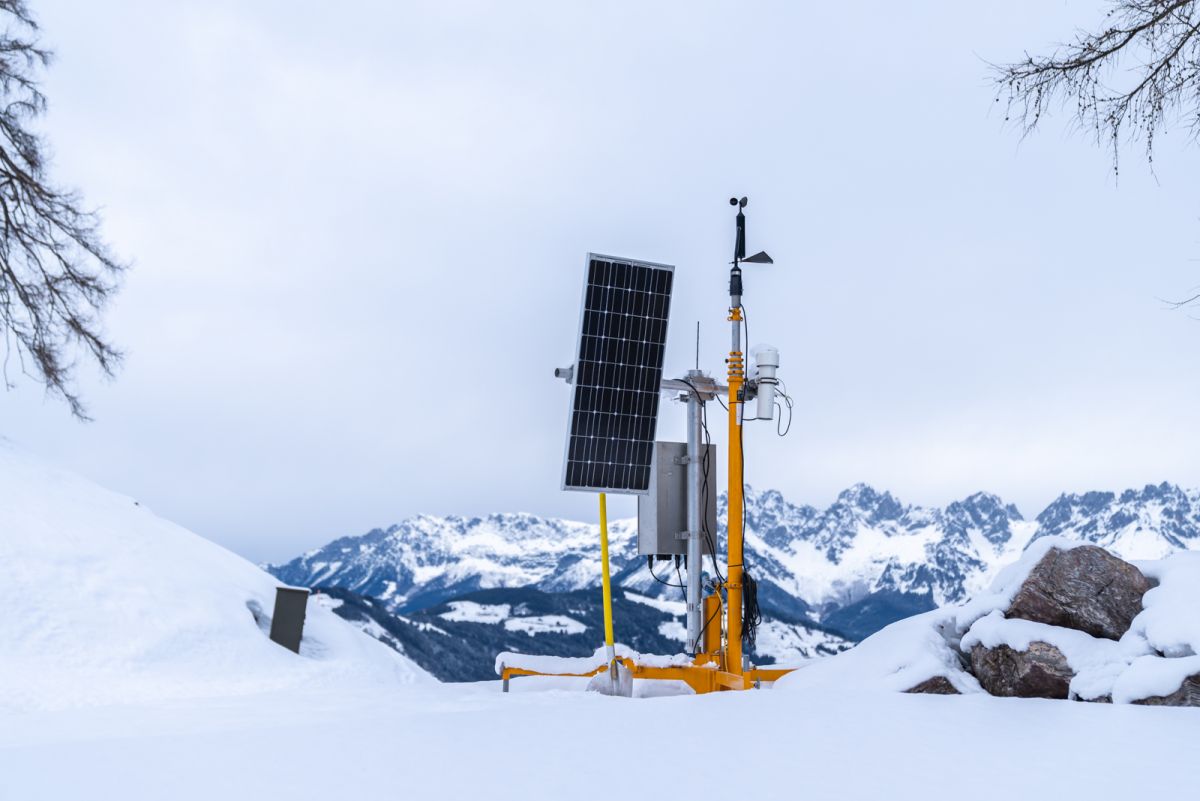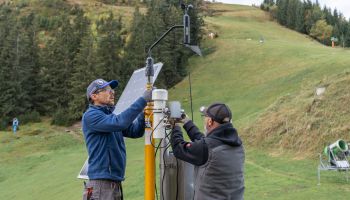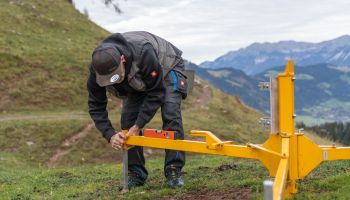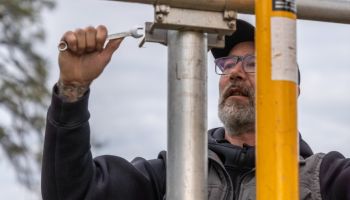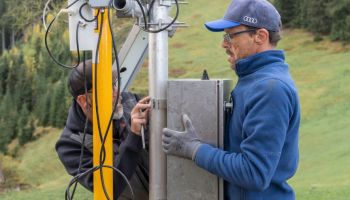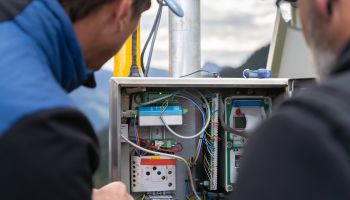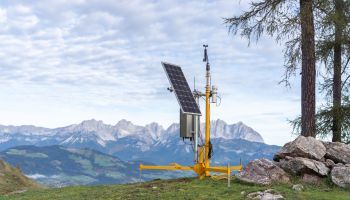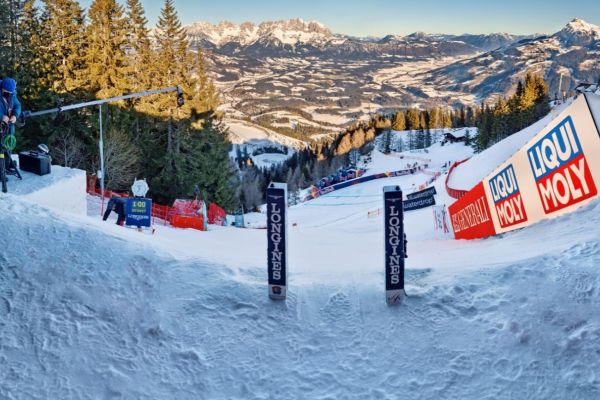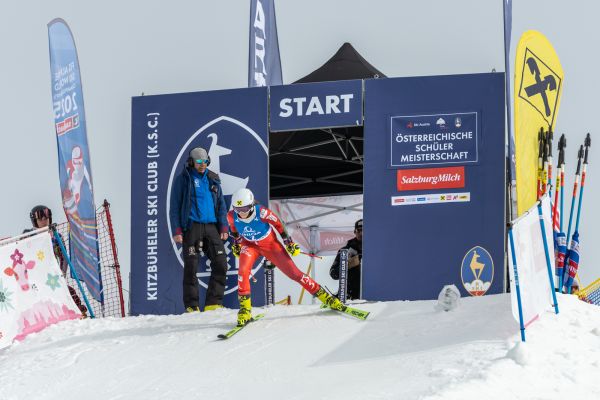20 Years of Partnership: GeoSphere Austria and the Hahnenkamm Races
They are just as important to the organisers as the snow they forecast: the meteorologists from GeoSphere Austria in Innsbruck. After all, their forecasts facilitate planning by the Organising Committee – and have done so for the past 20 years. GeoSphere Austria even employs a special HKR service in January, which uses several weather models and five weather stations in Kitzbühel for its highly accurate weather predictions
As passionately and meticulously as the Hahnenkamm Races are prepared year after year, neither the athletes nor the organisers have the final say in the matter: "The buck stops with the weather at any outdoor event, and so too at the Hahnenkamm" says Michael Huber, head of the Organising Committee and president of Kitzbühel Ski Club. Ultimately, it is solely external circumstances that determine whether the races can be held as scheduled, postponed, adapted or even cancelled.
"The weather sets the pace and in order to stay on schedule, you need a good weather forecast," Michael Huber knows from many years of experience. One of his first tasks at the ski club in the early 1990s was to call Zürich-Kloten airport (!) during race week to make a spontaneous (!) enquiry about the weather for Kitzbühel. Long gone are the days when the weather was left to chance and a flurry of last-minute phone calls. This year, the Hahnenkamm Races and GeoSphere Austria (formerly the Central Institute for Meteorology and Geodynamics, aka ZAMG) celebrate 20 years of collaboration.
The close cooperation takes place in the GeoSphere weather service department at Innsbruck Airport – its headquarters are also somewhat reminiscent of a command centre. In front of the meteorologist on duty, ten screens hang and stand in three rows, with the latest data streaming in everywhere. Manfred Bauer, head of the regional department of Tyrol and Vorarlberg, explains: “The two screens on top show satellite footage. This is how we can observe the weather from an altitude of 37,000 kilometres. The satellite rotates with the Earth and takes a picture every five minutes. The other screens display data from weather stations, images of precipitation radars, a lightning detection system and the current fire brigade operations."
In order to forecast the weather and its development as reliably as possible, "observation is the essential factor", says Manfred Bauer. “Forecasts are based on different models, which are in turn created from a gigantic amount of data that shows the current conditions. Because if I don't know what the weather is like right now, I can't tell you what the future has in store." Luckily, the GeoSphere headquarters in Innsbruck not only feature screens filled with data and graphics, but also quite conventional windows – and every now and then a simple look outside does the trick.
During the Hahnenkamm Races, GeoSphere has a special service that exclusively monitors the weather in Kitzbühel for two weeks. For these highly accurate forecasts, the meteorologists draw on several weather models, as well as data from five monitoring stations in Kitzbühel: on Mount Ehrenbachhöhe (at 1800 metres above sea level), at the Mausefalle, Seidlalm, Hausberg and in the Kurpark (near the Aquarena at 780 metres above sea level). The stations on the Ehrenbachhöhe and in the valley are permanent installations, while the stations at the Mausefalle, Seidlalm and Hausberg are set up anew every autumn. Essential data for the races include wind speed (especially on the mountain and in the Mausefalle section) and temperature (especially in the valley and on the Hausberg ridge).
The main challenge for the team of scientists is not necessarily creating forecasts, “but the stress we are subjected to – especially when facing difficult weather conditions”, Manfred Bauer explains. Michael Huber, too, is very aware of this pressure. “After all, the skiing world always keeps a close eye on us during the races. But it's also understood between GeoSphere and us that the experts should be frank if the weather situation doesn't allow for a reliable forecast." Meteorologist Alexander Radlherr “always considers his words very carefully”, as a lot depends on them: “In 2022, my forecast led to a last-minute swap of the Downhill and Slalom races. Luckily, my forecast was correct at the time” he says, still relieved today.
Some of the most difficult questions for the experts are: “Will there be fog on the course?”, Manfred Bauer mentions, but also “Will the weather be better for the start of the race – or when exactly will the disruption occur?” Michael Huber adds, the head of piste maintenance (“Is it freezing at night?”) has very different priorities than the race director (“Where should we start the race from?”). For such forecasts, the great experience of the experts with the special conditions in Kitzbühel plays a crucial role.
Despite the immense pressure the meteorologists face, there is a small consolation: "Winter is at least a touch easier to forecast than summer, as precipitation is not as extremely localised, but rather over a large area”, Manfred Bauer explains. The most ideal conditions for the Hahnenkamm Races would look like this: heavy snowfall in the run-up to the races and stable cold temperatures during them. But whether it will be nice, raining or snowing is ultimately determined by the weather alone. Today, tomorrow and every year.
Photo © K.S.C./alpinguin

